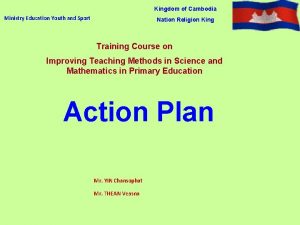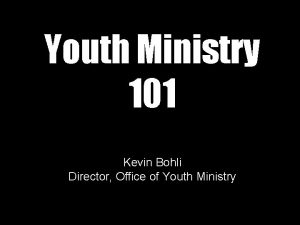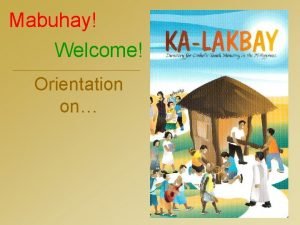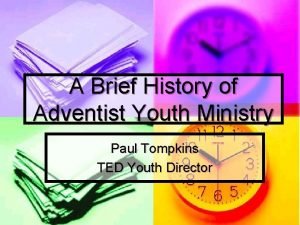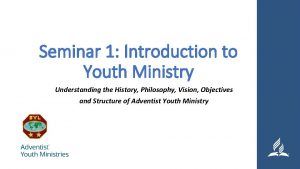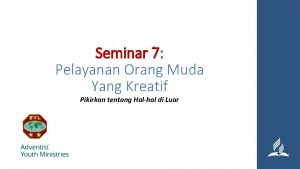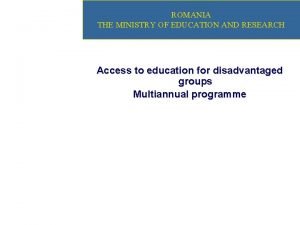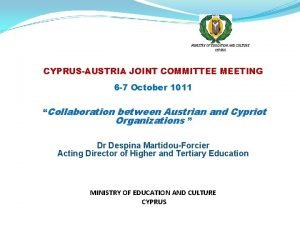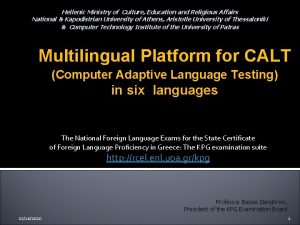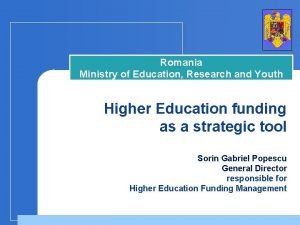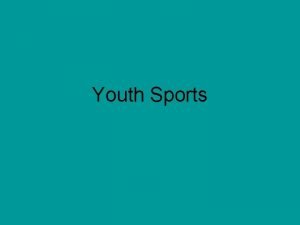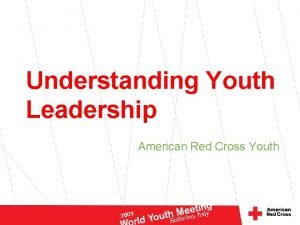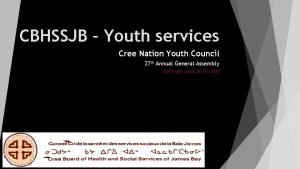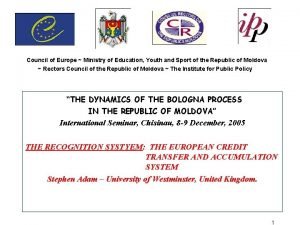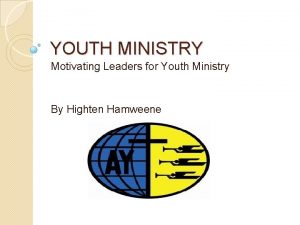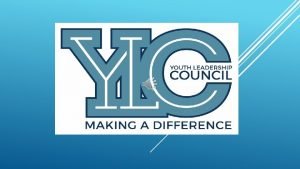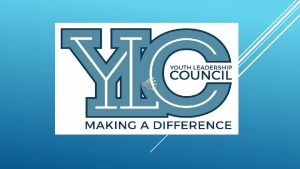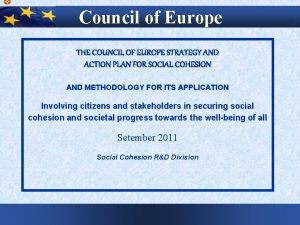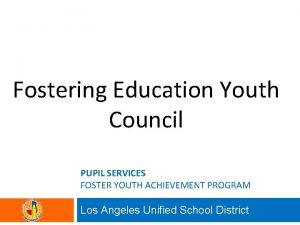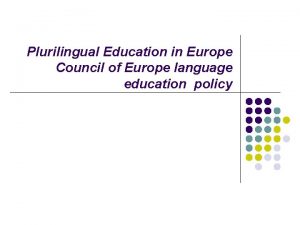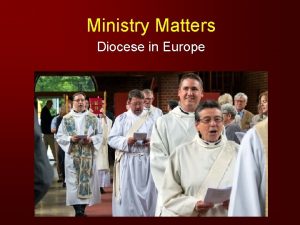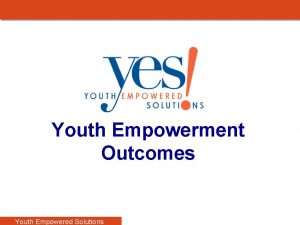Council of Europe Ministry of Education Youth and















- Slides: 15

Council of Europe ~ Ministry of Education, Youth and Sport of the Republic of Moldova ~ Rectors Council of the Republic of Moldova ~ The Institute for Public Policy “THE DYNAMICS OF THE BOLOGNA PROCESS IN THE REPUBLIC OF MOLDOVA” International Seminar, Chisinau, 8 -9 December, 2005 THE RECOGNITION SYSTEM: THE DIPLOMA SUPPLEMENT Stephen Adam – University of Westminster, United Kingdom.

~ THE DIPLOMA SUPPLEMENT ~ 1. 2. 3. 4. 5. 6. 7. 8. 9. 10. What is it? What it is not? Why is it needed? What does it offer students? What does it offer Higher Education Institutions? What is its role in the Bologna Process? Good practice guidelines for Diploma Supplements What does it contain? (8 sections and sub-sections) EUROPASS Concluding thoughts

1. What is it? q An initiative developed by the Council of Europe, the European Commission and UNESCO in 1998 q It is a product of the 1997 Convention on the Recognition of Qualifications concerning Higher Education in the European Region (Lisbon Convention) q It is document that provides a description of the nature, level, context, content and status of the studies that were pursued and successfully completed by the individual named on the original qualification. It is a detailed explanation of a qualification q An information tool to improve international mobility, transparency and recognition

2. What it is not? q A Curriculum Vitae q A substitute for the original qualification q An automatic system that guarantees recognition

3. Why is it needed? q Rapid global proliferation of new qualifications, Higher Education Institutions (HEI) and qualification frameworks q Many legitimate qualifications are not recognised or are under recognised q Mobile citizens seek fair recognition of their qualifications q Original credentials provide insufficient information q It aids mobility, access and lifelong learning

4. What does it offer students? q A diploma that is more readable and easily comparable abroad. q A precise description of the academic course pursued and on the competencies acquired during the study period. q Objectivity and a fair judgement of their achievements and competencies q An easier access to work or further studies abroad q It fosters their employability (employers are more and more interested by the student profile that is provided by the DS).

5. What does it offer Higher Education Institutions? q It facilitates academic and professional recognition, thus increasing the transparency of qualifications. q It protects national/institutional autonomy while offering a common frame which is accepted all over Europe. q It promotes informed judgements about qualifications. q It raises the visibility of the institution abroad. q It promotes the employability of their graduates at national and international level. q It helps save time since it provides the answers to a lot of recurrent questions put to HEI.

1. 6. What is its role in the Bologna Process? q The Diploma Supplement is given specific mention in the Bologna Declaration 1999 and the Prague Communiqué 2001. q The Diploma Supplement facilitates: – – easily readable and comparable degrees better access to employment + further study mobility a major recognition tool q The Berlin Ministerial Communiqué went further: ‘They (Ministers) set the objective that every student graduating as from 2005 should receive the Diploma Supplement automatically and free of charge. ’ Berlin Communiqué, 2003

7. Good practice guidelines for Diploma Supplements q Should conform to the guidelines produced by the original working party: – – – Include the approved note of explanation Follow the approved structure and sequence Never include value-judgements Obey translations rules Be quality assured, etc.

8. 1. 2. 3. 4. 5. 6. 7. 8. What does it contain? (8 sections) INFORMATION IDENTIFYING THE HOLDER OF THE QUALIFICATION INFORMATION IDENTIFYING THE QUALIFICATION INFORMATION ON THE LEVEL OF THE QUALIFICATION INFORMATION ON THE CONTENTS AND RESULTS GAINED INFORMATION ON THE FUNCTION OF THE QUALIFICATION ADDITIONAL INFORMATION CERTIFICATION OF THE SUPPLEMENT INFORMATION ON THE NATIONAL HIGHER EDUCATION SYSTEM

The Diploma Supplement: Sections and sub-sections (1) 1 1. 2 1. 3 1. 4 2 2. 1 2. 2 2. 3 2. 4 2. 5 INFORMATION IDENTIFYING THE HOLDER OF THE QUALIFICATION Family name(s): Given name(s): Date of birth (day/month/year): Student identification number or code (if available): INFORMATION IDENTIFYING THE QUALIFICATION Name of qualification and (if applicable) title conferred (in original language): Main field(s) of study for the qualification: Name and status of awarding institution (in original language): Name and status of institution (if different from 2. 3) administering studies (in original language): Language(s) of instruction/examination:

The Diploma Supplement: Sections and sub-sections (2) 3 3. 1 3. 2 3. 3 INFORMATION ON THE LEVEL OF THE QUALIFICATION Level of qualification: Official length of programme: Access requirements(s) 4 4. 1 4. 2 4. 3 INFORMATION ON THE CONTENTS AND RESULTS GAINED Mode of study: Programme requirements: Programme details: (e. g. modules or units studied), and the individual grades/marks/credits obtained: (if this information is available on an official transcript this should be used here) Grading scheme and, if available, grade distribution guidance: Overall classification of the qualification (in original language): 4. 4 4. 5

The Diploma Supplement: Sections and sub-sections (3) 5 5. 1 5. 2 INFORMATION ON THE FUNCTION OF THE QUALIFICATION Access to further study: Professional status (if applicable): 6 6. 1 6. 2 ADDITIONAL INFORMATION Additional information: Further information sources: 7 7. 1 7. 2 7. 3 7. 4 CERTIFICATION OF THE SUPPLEMENT Date: Signature: Capacity: Official stamp or seal: 8 INFORMATION ON THE NATIONAL HIGHER EDUCATION SYSTEM

9. EUROPASS Single framework for the transparency of Qualifications adopted by the European Commission December 2003. To be implemented by start of 2005: q Part of the Copenhagen Declaration 2002 (VET + HE) q Creates a single framework for the transparency of qualifications q Subsumes: Europass CV; Europass mobility; Europass Diploma Supplement; Mobilipass; Europass Certificate Supplement; Europass Language Portfolio q Links to the proposed European Qualifications Framework (EQF) for lifelong learning

10. Concluding thoughts … q Diploma Supplements: – – are to be issued by 45 European countries by 2005! should be issued automatically and free of charge Should be issued in an appropriate international language The European Commission have created a DS label q The Diploma Supplement is one of the central tools of the Bologna Higher education reform/modernisation process q It is an increasingly powerful recognition tool as the Bologna reforms are implemented (especially qualifications frameworks) q For more information (Google – – – it or): http: //www. coe. int http: //europa. eu. int/comm/education/policies/rec_qual/recognition/diploma_en. html http: //www. aic. lv/enic/ds/default. htm http: //www. enic-naric. net/ http: //wwweuropass. cedefop. eu. int http: //europa. eu. int/comm/education/programmes/socrates/ects/example 4. pdf
 Ministry of youth and sports cambodia
Ministry of youth and sports cambodia Youth ministry 101
Youth ministry 101 Kalakbay youth ministry
Kalakbay youth ministry History of adventist youth ministry
History of adventist youth ministry Youth ministry organizational chart
Youth ministry organizational chart Acara pemuda advent
Acara pemuda advent Prayer for youth leaders
Prayer for youth leaders Ministry of education and research romania
Ministry of education and research romania Ministry of education and culture cyprus
Ministry of education and culture cyprus Hellenic ministry of education and religious affairs
Hellenic ministry of education and religious affairs Ministry of education romania
Ministry of education romania Ministry of education and science of the russian federation
Ministry of education and science of the russian federation National council of youth sports
National council of youth sports Adventist youth council members
Adventist youth council members American red cross leadership
American red cross leadership Cree nation youth council
Cree nation youth council
